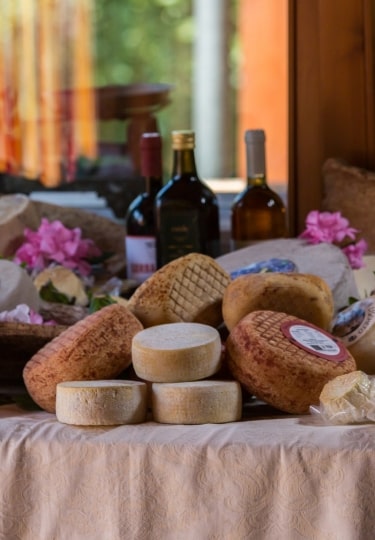Food in Florence runs the gamut from hearty peasant dishes to exquisite modern takes on the regional flavors by celebrated Michelin-starred chefs. In fact, for devotees of tasting menus, arguably Italy’s most famous chef Massimo Bottura has a presence at Florence’s Gucci Museum in a salivating synthesis of Italian artistry.
But what makes Florence’s food remarkable—and, indeed, Italy’s as a whole—is how the extraordinary is just an everyday event here. You’ll order a meal at a street corner trattoria that will offer a mesmerizing plateful that you’ll yearn to eat again immediately while you’re still mopping up the last of the sauce.
Read on for the ultimate guide to Florence’s food.
Cornetti and Caffe
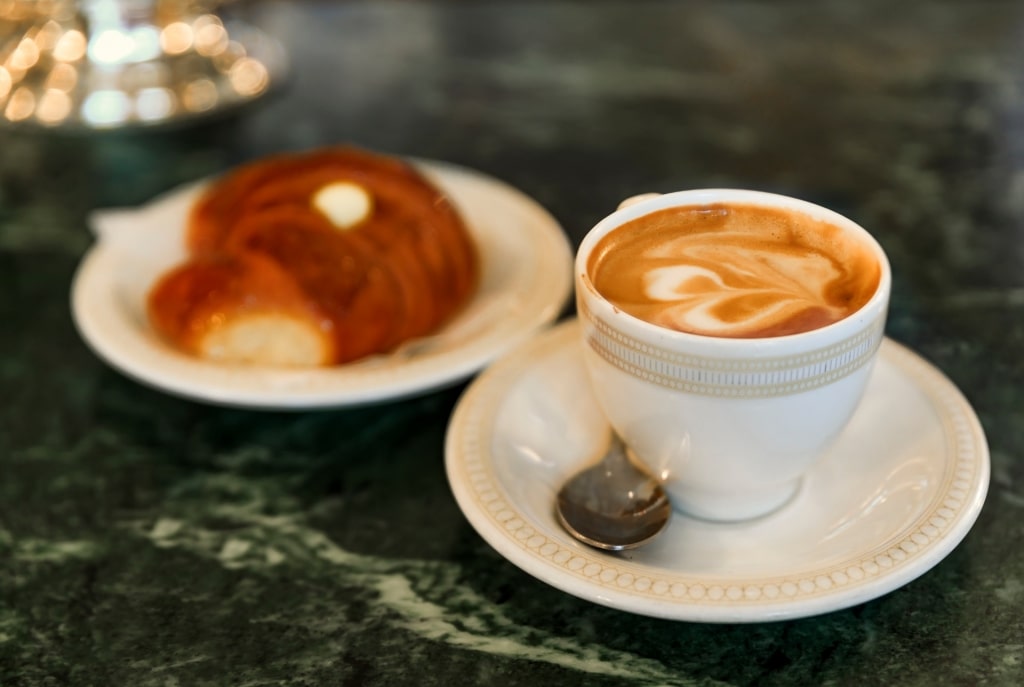
Cornetti and caffe
With its multitude of bakeries and cafés wafting sweet smells into the streets of Florence, every visitor should experience a piazza-view breakfast with a cappuccino and cornetto.
A close replica of the croissant, the cornetto arrived in Italy from the French who were, in turn, inspired by the Austrians and their kipferl. Of course, ask anyone in Florence and they’ll tell you that the Italian version of this classic pastry is superior.

Caffè Gilli
A good place for a poll on French versus Italian pastries is beneath the belle epoque chandeliers of Caffè Gilli in the Piazza della Repubblica. Try one of their outstanding jam-filled cornetti and return at aperitivo hour for their equally more-ish Negronis.
Pane Sciocco
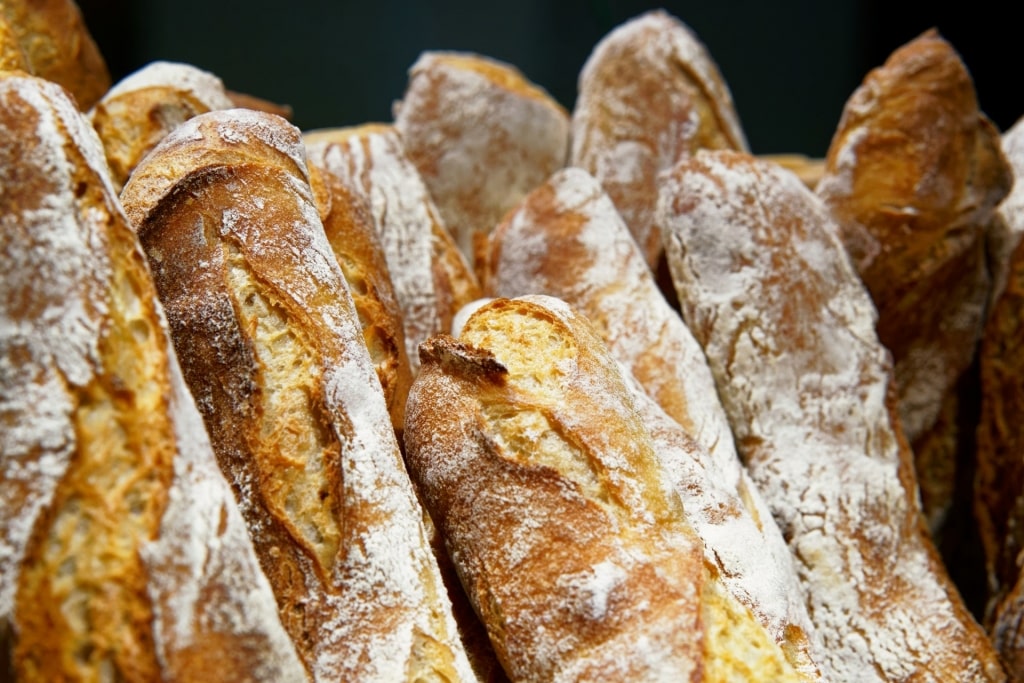
Pane sciocco
Curiously, while Florentine cornetti are extraordinarily rich, another area of the Florentine bakery window advertises bread that is remarkably flavorless. The Tuscan country loaf, or pane sciocco, is baked without salt.
Tasting this crunchy, chewy loaf for the first time, it can seem a blind spot in what is otherwise a faultless regional menu.
The historic take on why pane sciocco is conceived from salt-deprived dough is that the tax on salt in medieval Florence was prohibitively high, so it was omitted from the recipe.
Another suggestion adopts a more culinary perspective. With a regional cuisine comprising numerous rich and heavy sauces to mop up, pane sciocco was developed to focus less on taste and more on texture.
Whether you appreciate its harmonious nature or find it feels like empty calories is, somewhat ironically, a matter of taste.
Read: Two Days in Florence
Bistecca alla Fiorentina
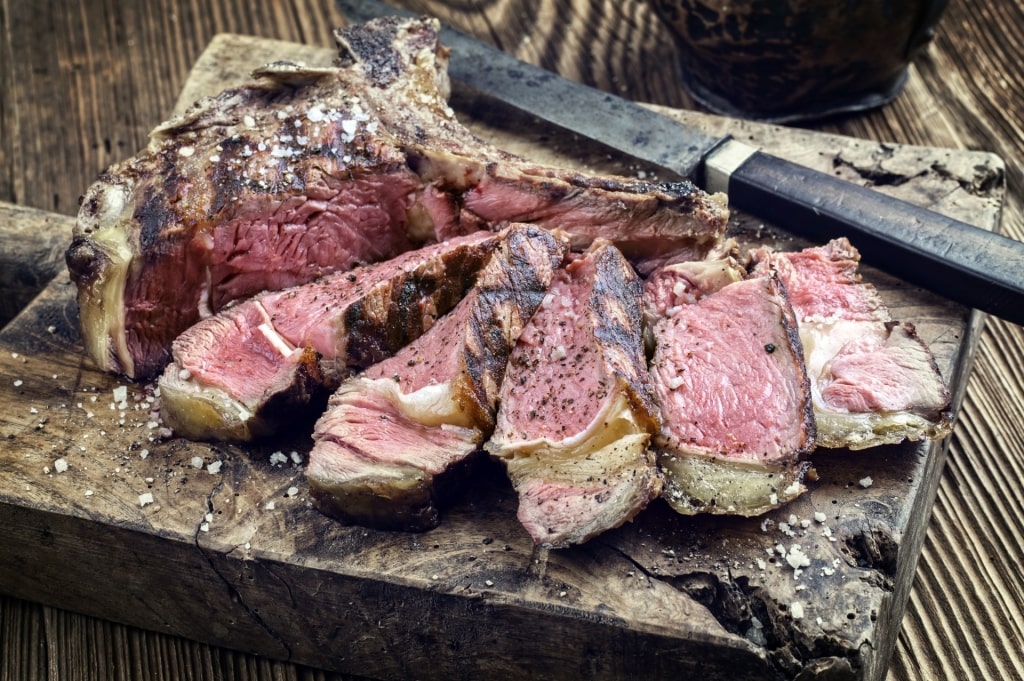
Bistecca alla Fiorentina
On the golden fields surrounding Florence, you’ll see bulky, chalk-white cattle grazing amid the rows of cypress.
These are the Chianina, statuesque bovines that have grazed the rolling pastures of the Valdichiana for more than two millennia. It’s from these remarkable beasts that perhaps the most iconic meal that Florence is known for is derived—bistecca alla Fiorentina.
A two-to-eight-pound porterhouse steak that’s intended to be shared, it’s always prepared in the same way—seared to perfection over olive and oak embers (or roasted chestnuts for what some see as the ultimate traditional flavor). The steak, seasoned with salt and pepper, is typically served rare.
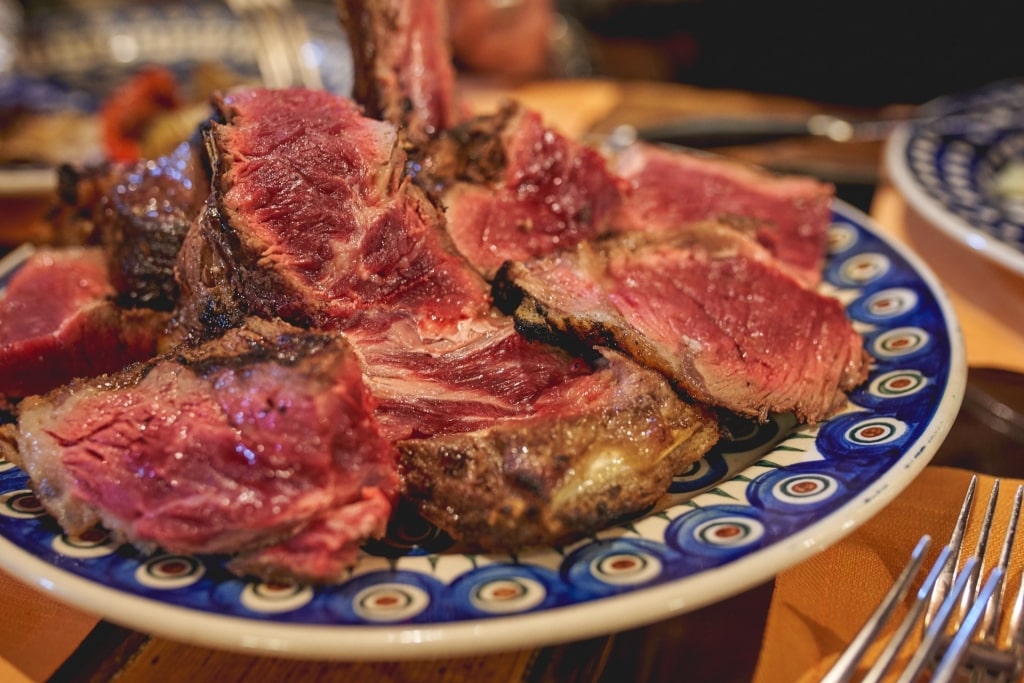
Bistecca alla Fiorentina
The origins of this meal reach back to the era of Florence’s first family, the medieval power brokers the Medicis. Complimenting your week’s protein intake is usually a side of cannellini beans tossed in olive oil and herbs.
Uncork a bottle of cherry-and-spice Chianti Classico and enjoy possibly the finest steak of your life.
Read: An Insider’s Look at Italian Food Culture
Tagliatelle Funghi Porcini e Tartufo
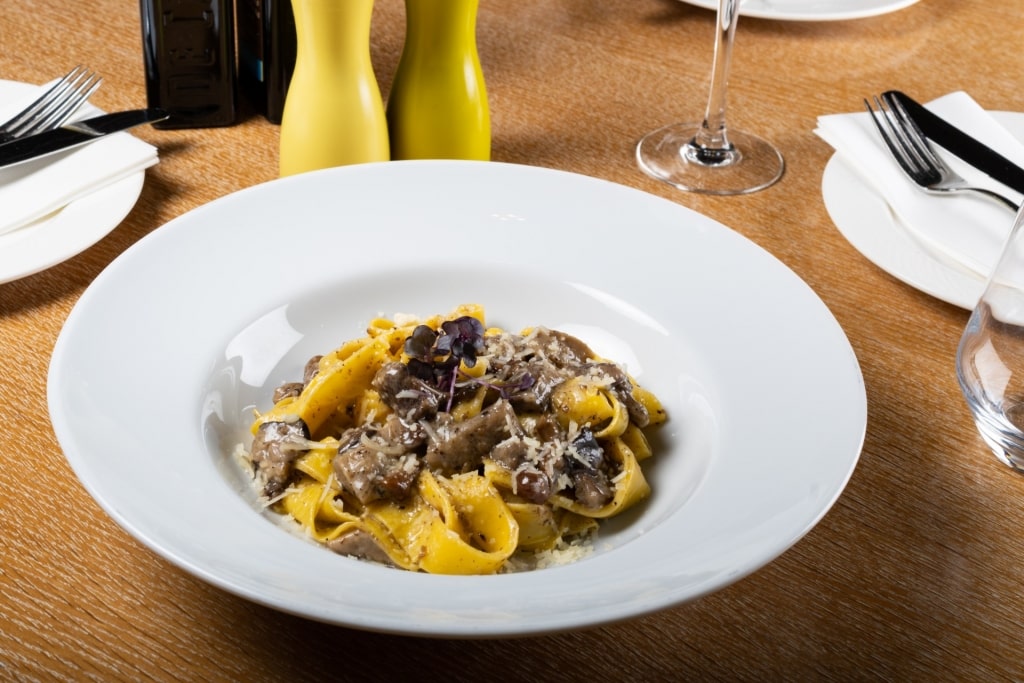
Tagliatelle funghi porcini e tartufo
Italians love their truffle. The fruiting body of the underground tuber melanosporum, this pungent, flavorsome ingredient is integral to the country’s fall comfort food configuration.
Of course, there’s also the white truffle—rarer, more aromatic, and markedly more expensive. During this time of year, the historic centers of towns and villages are adorned in medieval flags while, in the nearby woodland, specially trained dogs dig furiously beneath the roots of trees while their truffle hunter masters look on.
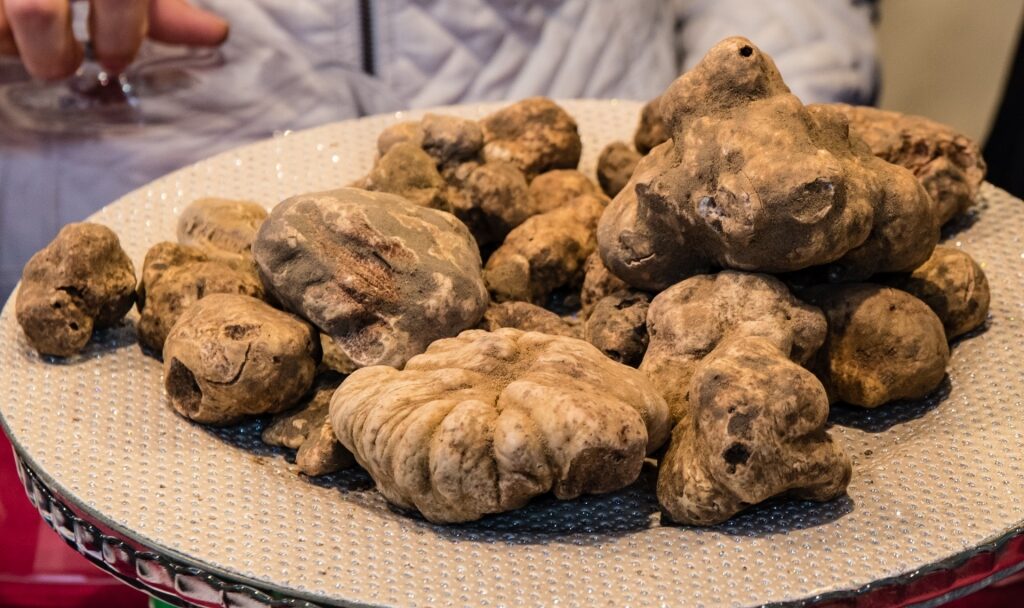
White truffles
While white truffle season is tied to the fall, fresh black truffle is available year-round throughout restaurants and markets in Italy.
With Tuscany one of the country’s recognized truffle hot spots, you’ll find it throughout Florence’s trattorias, shaved over pasta, or even on gelato as a crispy and unusual ice cream topping.
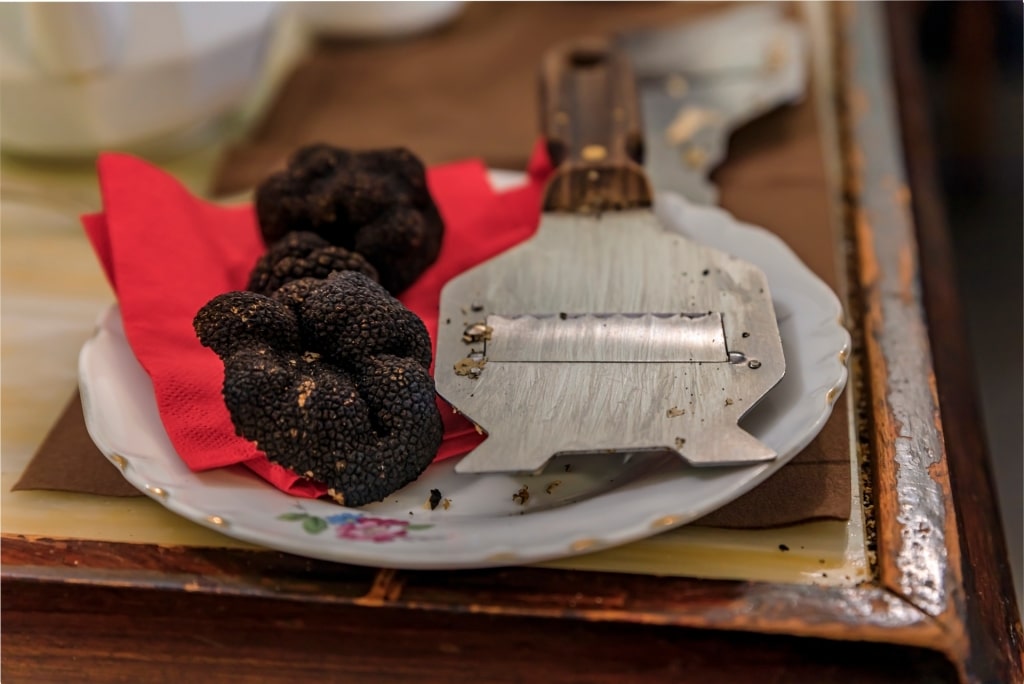
Black truffles
One of the most popular dishes in Florence that uses truffle is tagliatelle funghi porcini e tartufo. In the case of this dish richness (porcini mushrooms) is combined with yet more richness (truffle) in the form of an umami-packed sauce.
Cut through it with an emerald sprinkle of parsley and enjoy a heavenly mouthful of autumnal Tuscany.
Lampredotto
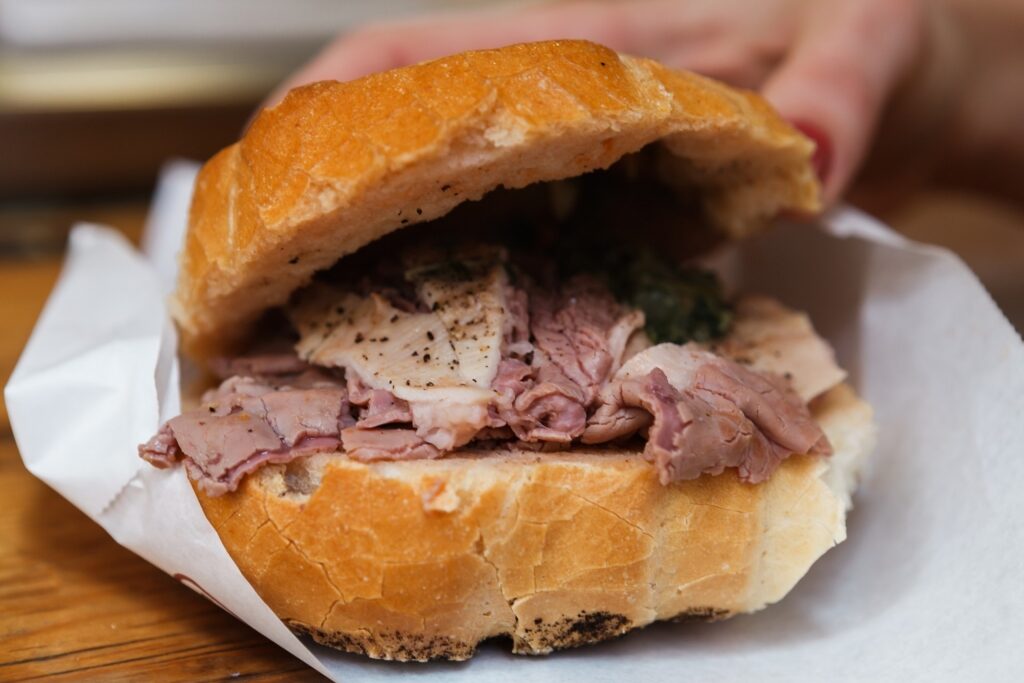
Lampredotto
Lampredotto is the thinly cut meat derived from a cow’s stomach. It’s a lunchtime favorite in the city, served in buns from food trucks and stalls (trippai) to queues of hungry Florentines.
Select green or red sauce (herby or spicy) and enjoy it with a splash of broth in a bagnato that’s been hollowed out to contain maximum tripe.
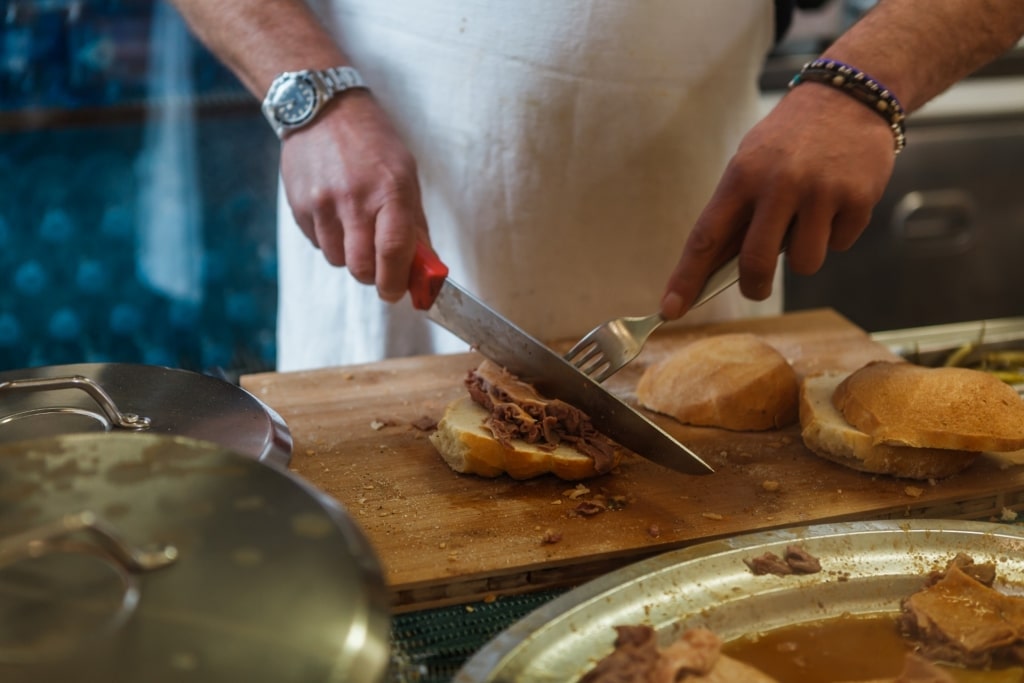
Lampredotto
The sandwich has an impressive cultural history. With their betters hoarding the best cuts, the 13th-century working-class Florentines had to manage with whatever protein they could get their calloused hands on.
That cut was the fourth stomach of the cow (the abomasum), typically stewed to slippery softness and seasoned simply with black pepper.
No doubt contributing to the deliciousness for some is that the name “lampredotto” refers to the eel-like appearance of the meat.
However, you feel about this tripe/eel hybrid it nevertheless remains a keystone of food in Florence. Trying it is a must when visiting the city. Can over eight centuries of Florentine carnivores be wrong?
Pappardelle al Cinghiale
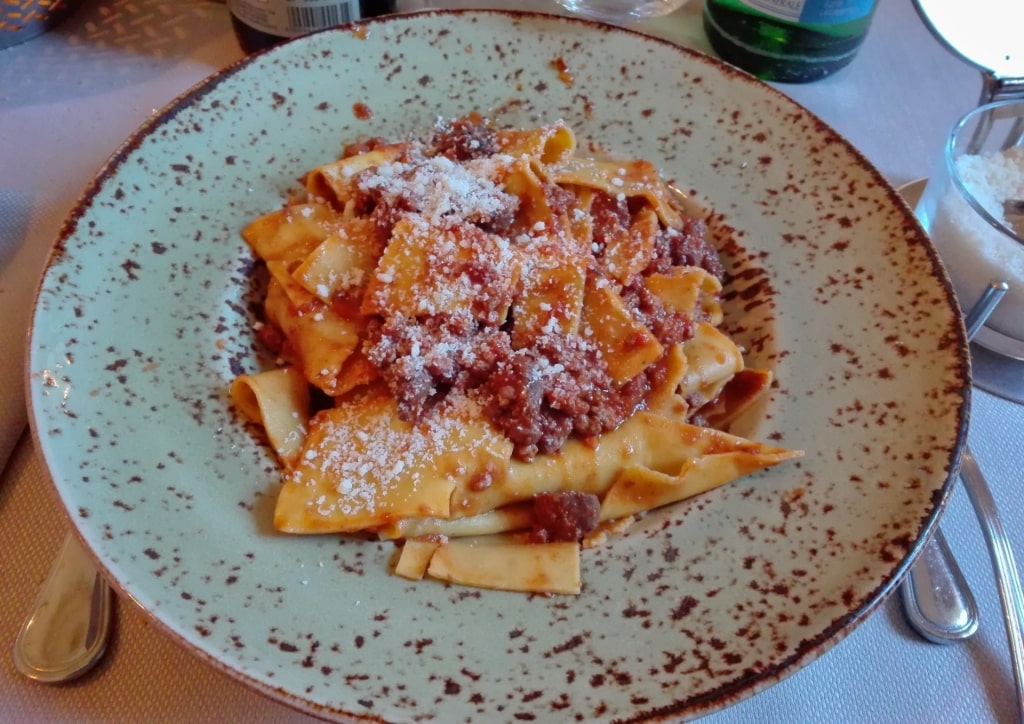
Pappardelle al cinghiale
Making use of the country’s prolific boar population, pappardelle al cinghiale is one of the guiding lights of comfort food in Florence. The flesh of the wild boar is transformed into a rich, gamey sauce that clings to the broad, silken ribbons of pappardelle pasta—a favorite regional variety.
The ragu is made by simmering the boar meat overnight in a wine and tomato sauce. While typically available year-round, you’ll see a bump in the availability of pappardelle al cinghiale during autumn and winter when the hunters prowl the chestnut forests stalking their burly quarry. Add a sprinkling of parmigiano reggiano and parsley to balance the richness.
Ribollita
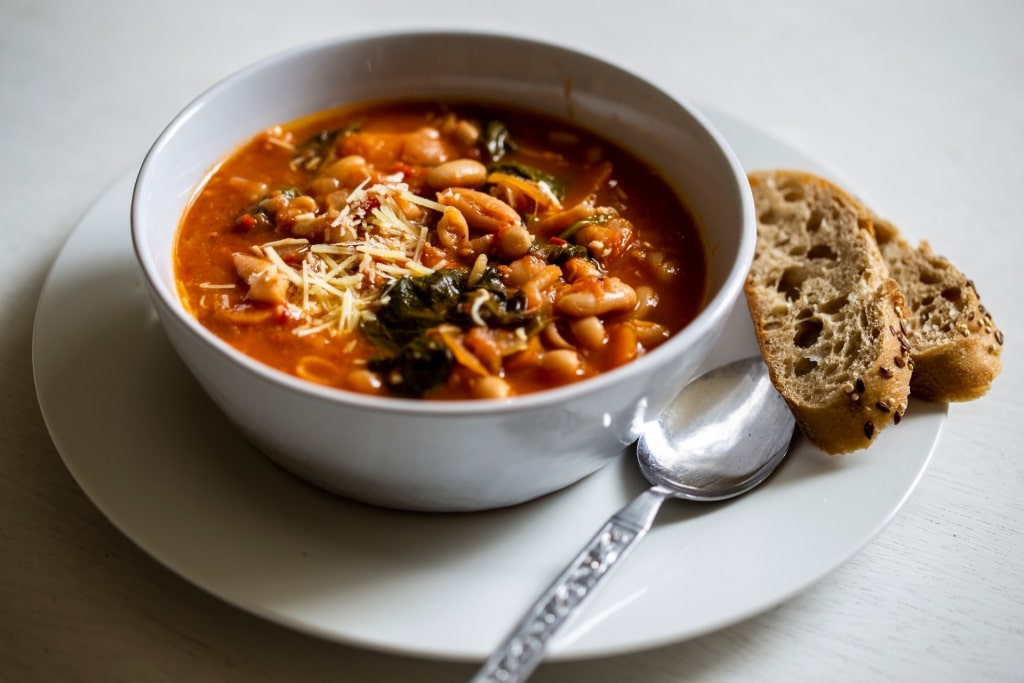
Ribollita
Like lampredotto, ribollita is another example of rustic Italians whipping up something timeless and delicious while in the grip of deprivation.
Among the best food in Italy, this thick vegetable soup can pretty much comprise anything lurking in the vegetable drawer but typically involves cavolo nero kale, white cannellini beans, and a slice of olive oil-infused pane sciocca that sits beneath the stew.
It’s a hearty and restorative meal that, with its absence of any meat, can be kept and remade continually until it’s all used up.
This Florence food is often held up as a prime example of cucina povera, those simple and delicious recipes of the national cookbook derived from rustic corners where pickings were often slim.
However, there’s a competing origin story for this dish that places it firmly on the banquet table of medieval nobility.
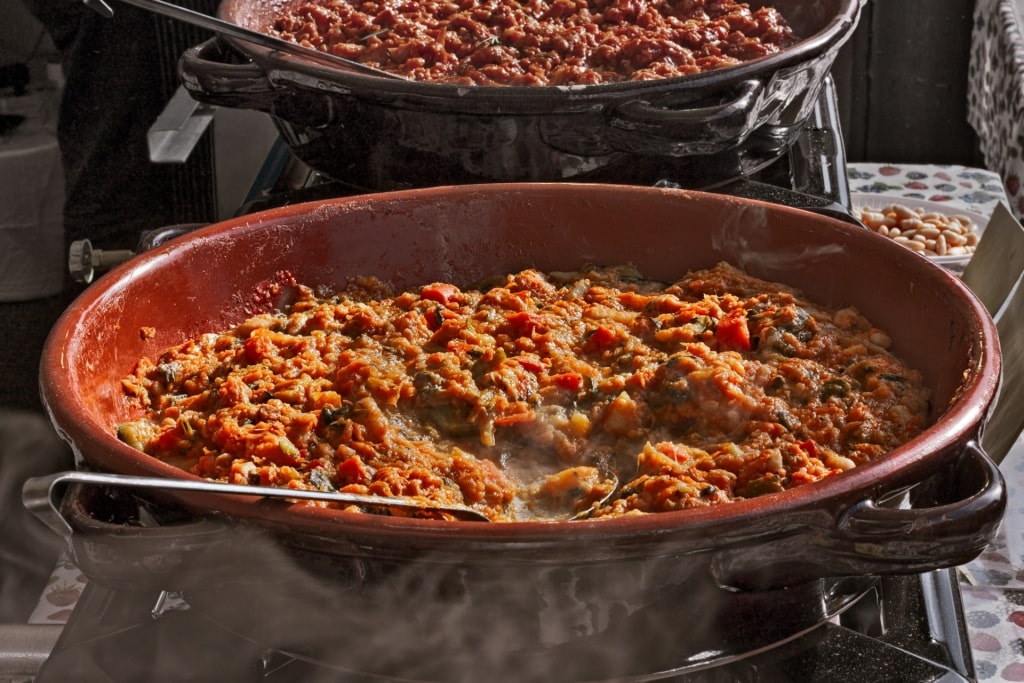
Ribollita
The word “ribollita” translates as “reboiled”. This has often been attributed to the cooking process, where it can be reboiled as it’s rebuilt with fresh ingredients added to its leftovers. However, another interpretation of its name has it as the leftovers procured by servants from the tables of their employers. The reboiling in this case was more of a warming up.
Hopefully, there was also some wine to steal as well. As always, the local Chianti Classico is a reliably delicious pairing with Florence’s food. Or spend a little more and elevate your ribollita even further with a bottle of Brunello di Montalcino.
Tagliere
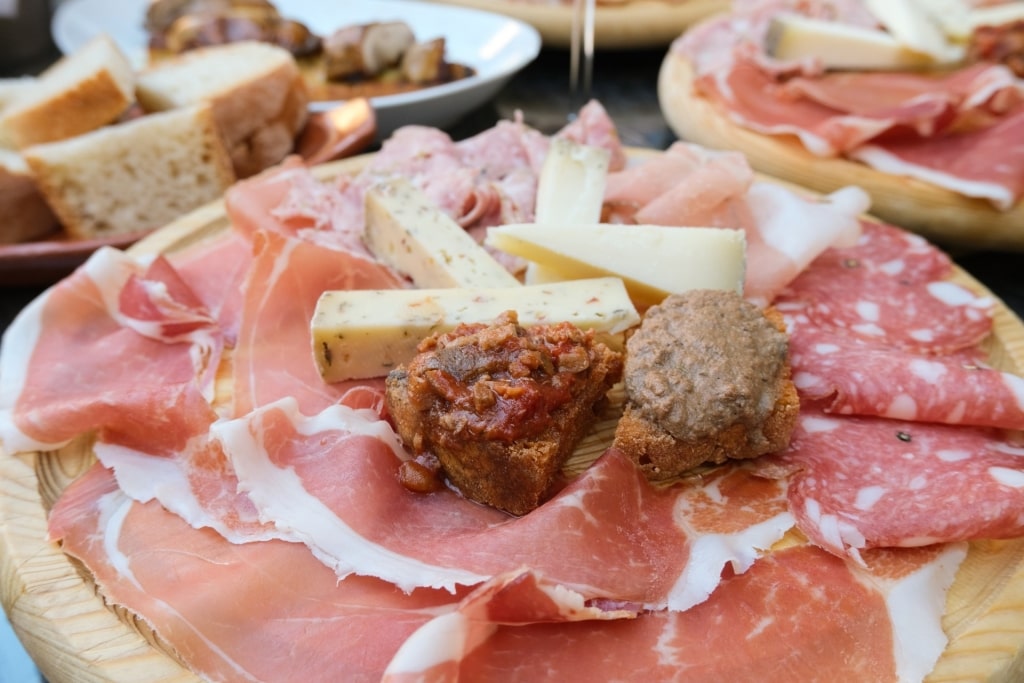
Tagliere
Your go-to antipasto when eating in Florence is tagliere. Its name, which literally translates as “chopping board”, derives from the wooden slab on which this array of delicious formaggi, salumi, and other appetite-stimulating treats is delivered to your table.
Of course, with the tagliere being so delicious, this is often more of an appetite decimator than the springboard to a long meal, especially as it’s often a showcase for the province’s tastiest products.
These include cured meats such as lardo di colonnata, pliable and toothsome local cheeses, and a few crisp coins of sumptuously-topped crostini.

Chicken liver pâté
Crostini are a flagship morsel of food in Florence. As well as appearing on the tagliere, you’ll encounter them at aperitivo hour buffets or on silver platters gliding amid the guests at a marathon Italian wedding.
With the typical Tuscan variety, you can expect a deeply savory chicken liver pâté—often prepared with white wine and anchovies—as a topping on your broth-moistened crouton.
Rumor has it that when Catherine de Medici arrived on the French throne in the 16th century, her culinary entourage brought with it the recipe for crostini toscani that apparently went on to inspire foie gras.
Whether true or otherwise, the sheer weight of culinary history and artistry that is gathered attractively on a traditional tagliere is worth brief consideration before you dive in.
Cantuccini Con Vin Santo
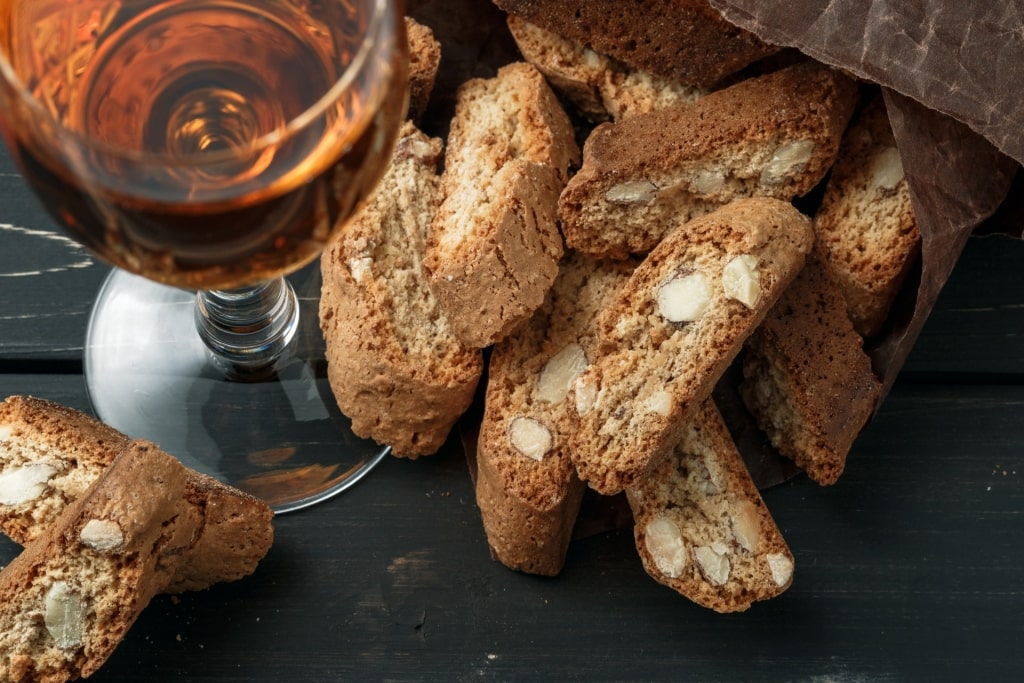
Cantuccini con vin santo
Cantuccini or cantucci are one of the most recognizable elements of food in Florence. Often wrapped in attractive gift bags, a small parcel of these crunchy oblong biscuits studded with bright white almond pieces makes for one of the bel paese’s most popular souvenirs or gifts.
That is if they aren’t unsealed and devoured prior to arriving in the hands of the giftee. For these sweet biscuits, often made with chocolate chips or pistachios are practically irresistible.
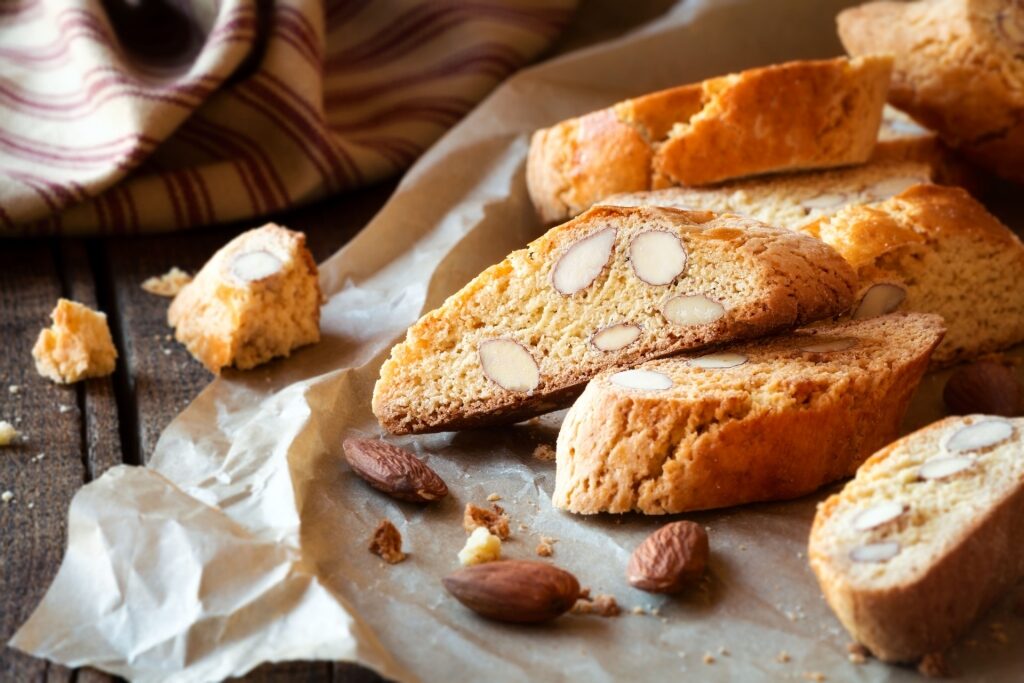
Cantuccini
And while you could consider deploying the excuse that they don’t travel well, unfortunately, the technique of twice baking was devised by the Romans to ensure that their biscotti (cookies) did, indeed, last on the march.
The origin point for this particular biscotti recipe is just north of Florence in the city of Prato—a center for almond production in the area.
Cantuccini are often found accompanying the bitterness of espresso or being dipped in caramel-sweet Vin Santo wine at the end of an epic Florentine feast. It’s the cookie for all occasions.
Pappa al Pomodoro
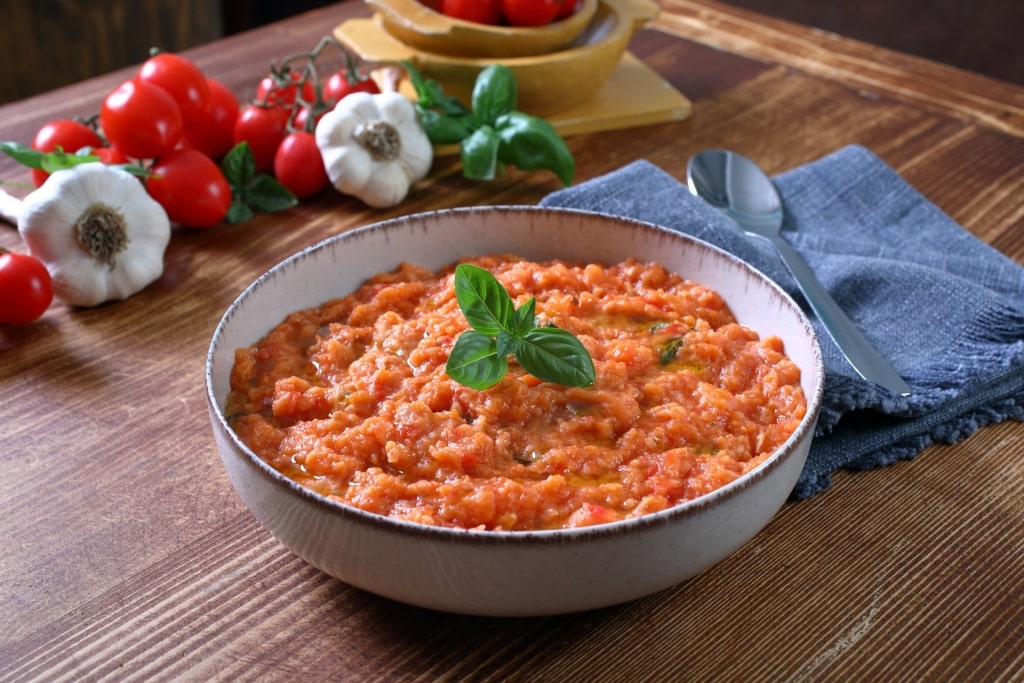
Pappa al pomodoro
Pappa al pomodoro is a classic Tuscan dish that, similar to ribollita, was at least partly concocted to use up leftover bread.
The classic Tuscan loaf known as pane sciocco is made without salt, so it has a shorter shelf life than salted loaves (although its longer fermentation ensures that it does develop some taste).
In order to make the most of the loaf, stale slices were included in recipes. In the case of pappa al pomodoro, the slices are crumbled up into the soup during cooking.
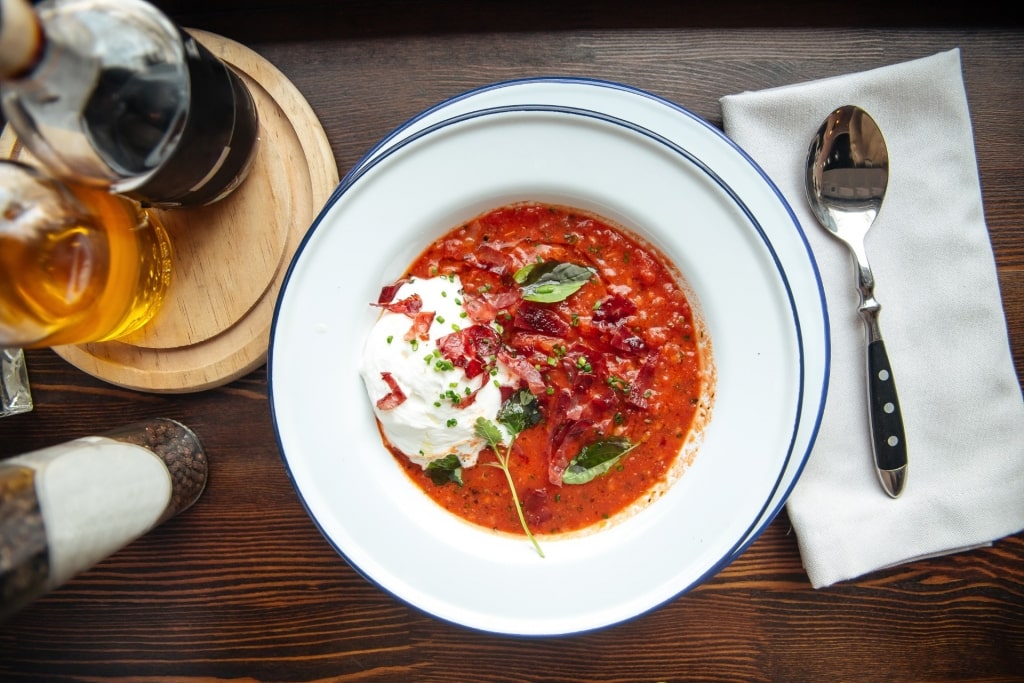
Pappa al pomodoro
The rest of the pappa al pomodoro mostly comprises those fulsome Italian tomatoes that, as you taste, encourage you to ponder just how colorless your domestic varieties can be. This vivid fruit is then melded with that textbook Italian quartet of basil, garlic, onion, and olive oil during a lengthy simmer in stock.
The result is a soup with a unique, lumpy consistency. It’s filling, flavorful, and a wonderfully warming bowlful whether there is snow dusting the Duomo or summer sun flashing off the blades of rowers racing along the Arno.
Read: The Ultimate Guide to Art in Florence
Schiacchiata alla Fiorentina
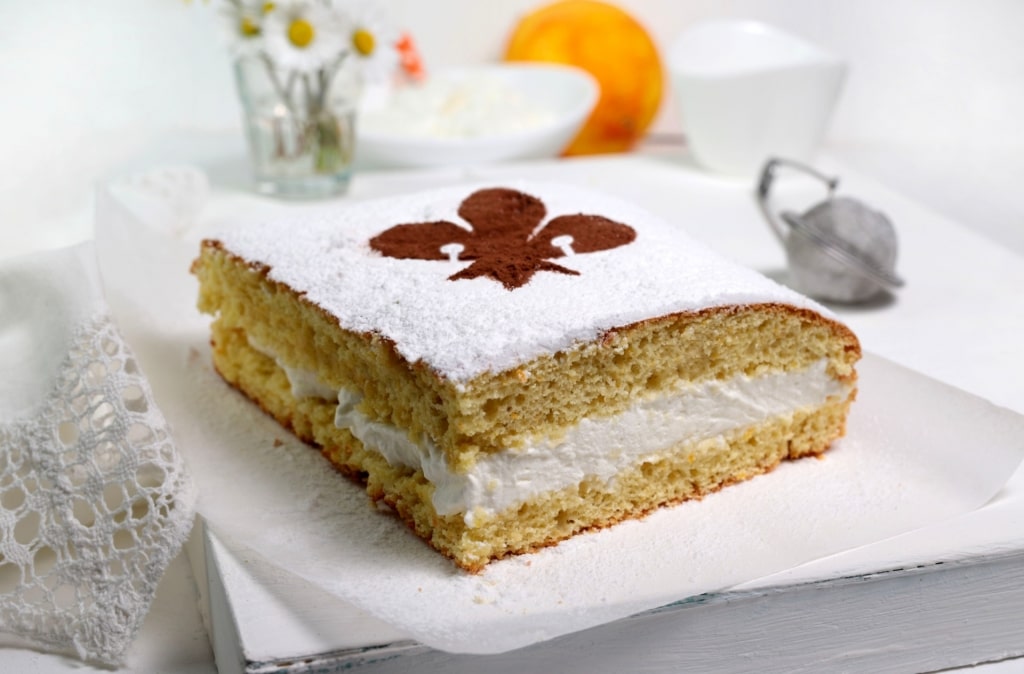
Schiacchiata alla Fiorentina
Now for dessert. One of the most beloved cakes found on the Florentine treat trolley is the schiacchiata alla Fiorentina. It’s traditionally served at Easter, although you’ll find it year-round today.
Falling somewhere between a sponge cake and an aromatic sweet loaf, the crumb of the schiacchiata alla Fiorentina is imbued with orange zest. The cake often comes with a filling, with popular choices including chantilly cream, custard, or ricotta.
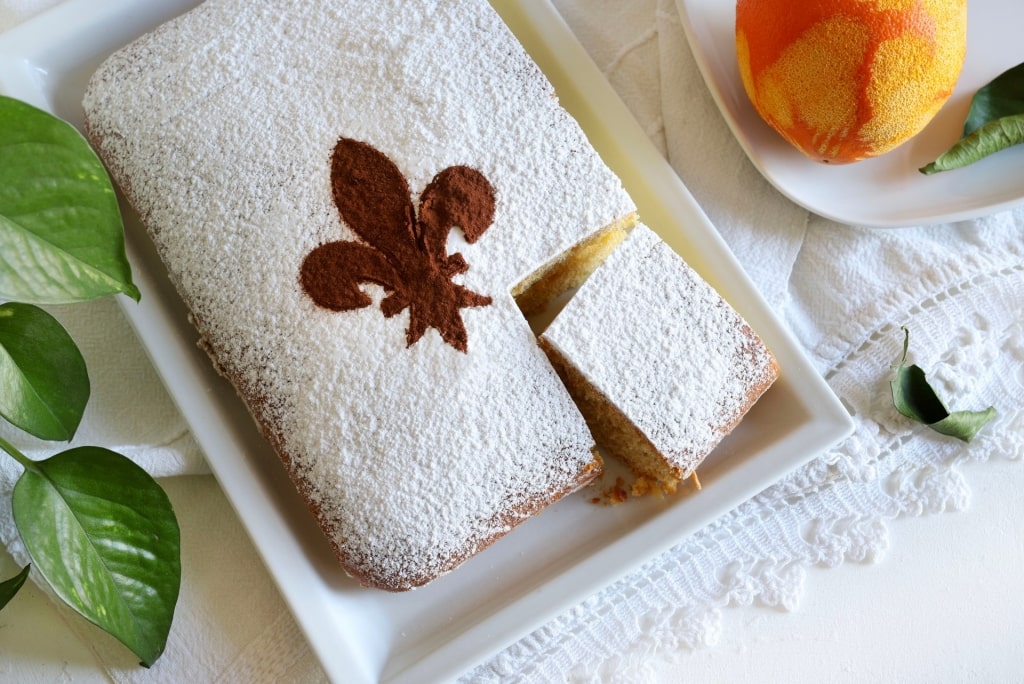
Schiacchiata alla Fiorentina
This cake is easily identifiable as it’s often dashingly decorated with a fleur-de-lis. While the design is a common heraldic emblem, it has a particular significance in Florence. The fleur-de-lis’ origins are as a stylized representation of the giaggiolo, or Florentine lily.
Look out for this handsome plant sprouting along the flagstoned seams of the medieval streets as you’re walking to your next memorable meal in one of the best food cities in Italy.
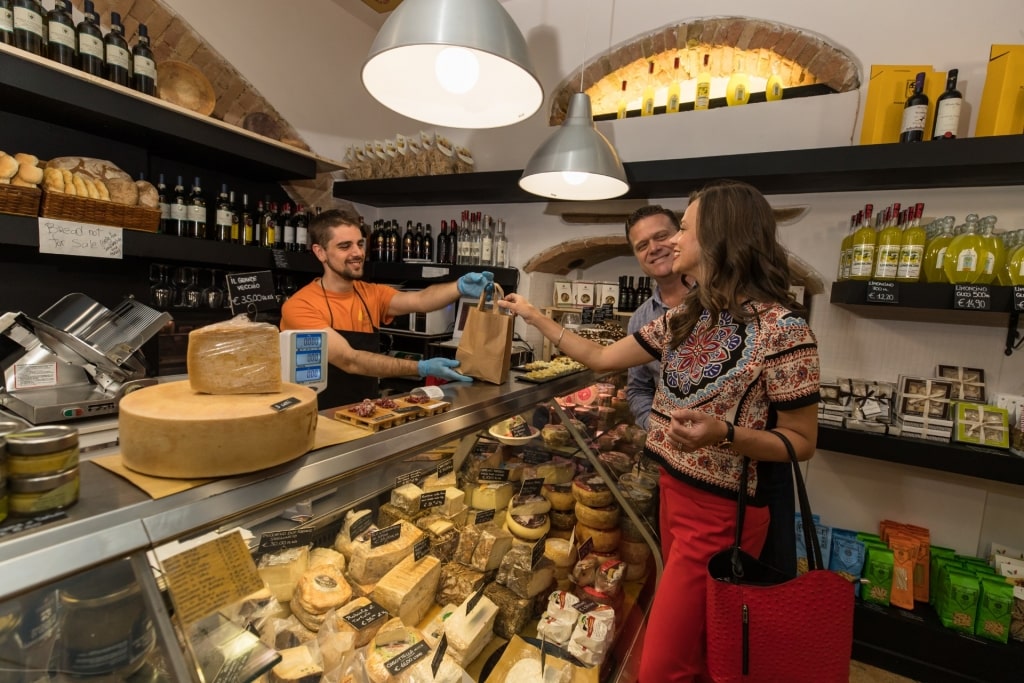
Florence
Savor all of the delicious food in Florence and more on a cruise to Italy. From world-renowned architecture, sublime artworks, and vibrant culture, Italy is deservedly one of the world’s most popular destinations.
Browse Celebrity’s Florence cruises online and book an incredible Italian vacation today.
